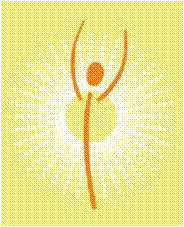Head To Toe Wellness Pilates - Yoga - Energy Healing
Building strength from the inside out

Principles of Pilates
Ever since Pilates became a mainstream form of exercise in the 1990's, it's been one of the fastest growing and most popular exercise forms with well over 25 million participants. However the Pilates method goes back much further than that and is more than an exercise form. The founder, Joseph Pilates (1883 - 1967), took elements from a wide range of exercise forms and created a fitness system balancing strength with flexibility. that coordinates body, mind and spirit. Pilates called his method Contrology (it wasn't until after Joseph Pilates' death that the method was referred to as Pilates).
After emigrating to the USA, Pilates set up a studio in New York which soon became very popular among ballet dancers initially, as the exercises complimented their traditional training routines, but the studio quickly attracted actors, athletes and the rich and famous wanting a strong supple body.
Pilates never set up an official training programme and the first generation of teachers, learning directly from Pilates were all taught differently, resulting in slightly different takes on the original method, and Body Control Pilates is one of them. The original or classical mat-based work consists of 34 exercises, also known as "The Full Mat". Body Control Pilates breaks down the classical exercises, focusing on basic movement patterns in order to build up your body to a strong foundation, that can gradually progress to more advanced work.
There are 8 fundamental principles of Body Control Pilates, developed from Joseph Pilates' original 6 that should be followed for each exercise:
Relaxation - Releasing both physical and mental tension is essential to allow constructive change to ocur
Concentration - In order to change, you need to be consciously aware, and therefore you must be mindful at all times of your body and its movemenents
Co-ordination - Matwork teaches you to control and perform precise functional movement patterns, that get more complex as you progress


Centring - Dynamically control the stability of your core as a stable support base for all movement
Alignment - Keep joints and soft tissue in their natural zone for healthy, stable and efficient movement
Breathing - Synchronize the breath with your movement for stability and fluidity
Stamina - Efficient movement allows you to build endurance.
Flowing Movements - Movement should always be controlled, graceful, fluid and dynamic
For more information about the history of Pilates and the original principles, we recommend:
Return to Life Through Contrology, Joseph Pilates - Your Health, Joseph Pilates
